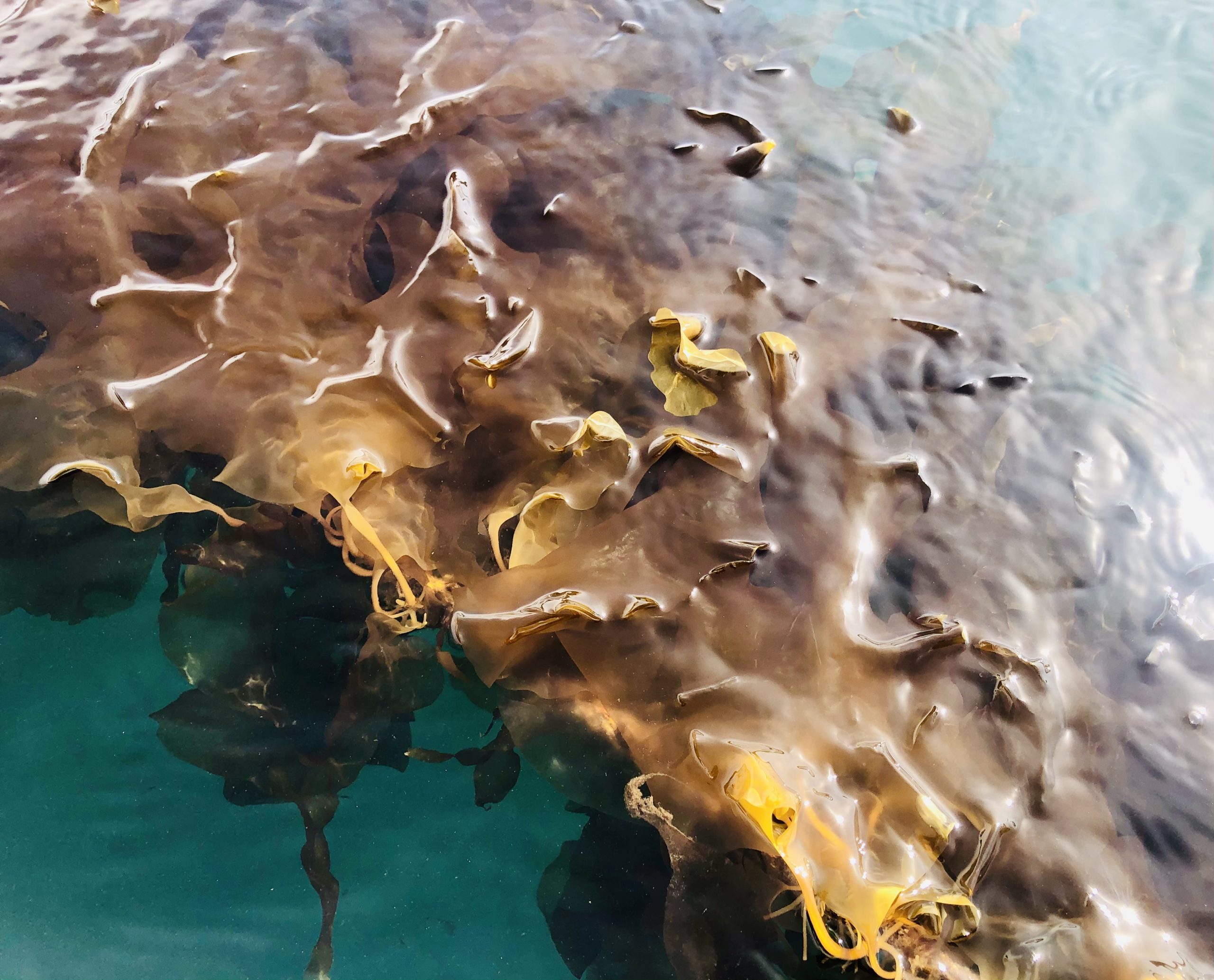
Sugar kelp (Saccharina latissima)
Sugar kelp offers both a sweet and salty, umami (savory) flavor that’s desirable in a variety of dishes. You can eat it “on its own as a sea vegetable, or as a food ingredient or flavour enhancer”. Sugar kelp “is rich in iodine and minerals, in particular calcium, potassium, manganese and iron… Its name derives from its distinct sweet taste caused by large amounts of the sugar alcohol mannitol” (Mouritsen et al., 2012).
Each blade contains substantial amounts of important vitamins and minerals, as well as naturally-occurring sugar. You can cut fresh sugar kelp into strips to make your own noodles or add dried pieces to soups/stews for a superfood addition!
We are excited to start cultivating sugar kelp in the fall of 2021. Sugar kelp thrives in semi-protected areas, like our farm site in Simpson Bay, Prince William Sound. Our first harvest will take place in April-May 2022. Stay tuned!
